How Do You Get Advertisements on YouTube? A Consultant's Guide
- Chase McGowan

- Aug 7
- 11 min read
So, you want to get your ads on YouTube?
The technical answer is simple: you run them through the Google Ads platform. But that's not the real question, is it? The real question is how you do it without handing over a massive retainer to an over-priced, bloated agency that sees you as just another line item on a spreadsheet.
Your Blueprint for Profitable YouTube Ads
This guide isn't about generic advice. It's a look inside the playbook I use as a specialized consultant—the same hands-on strategies that deliver serious results for my clients. We're talking about a focused framework built on precision and efficiency, not agency bloat.
My goal here is to show you how to connect your brand with the right people on YouTube, making sure every dollar you put in is a real investment toward growth you can actually measure.
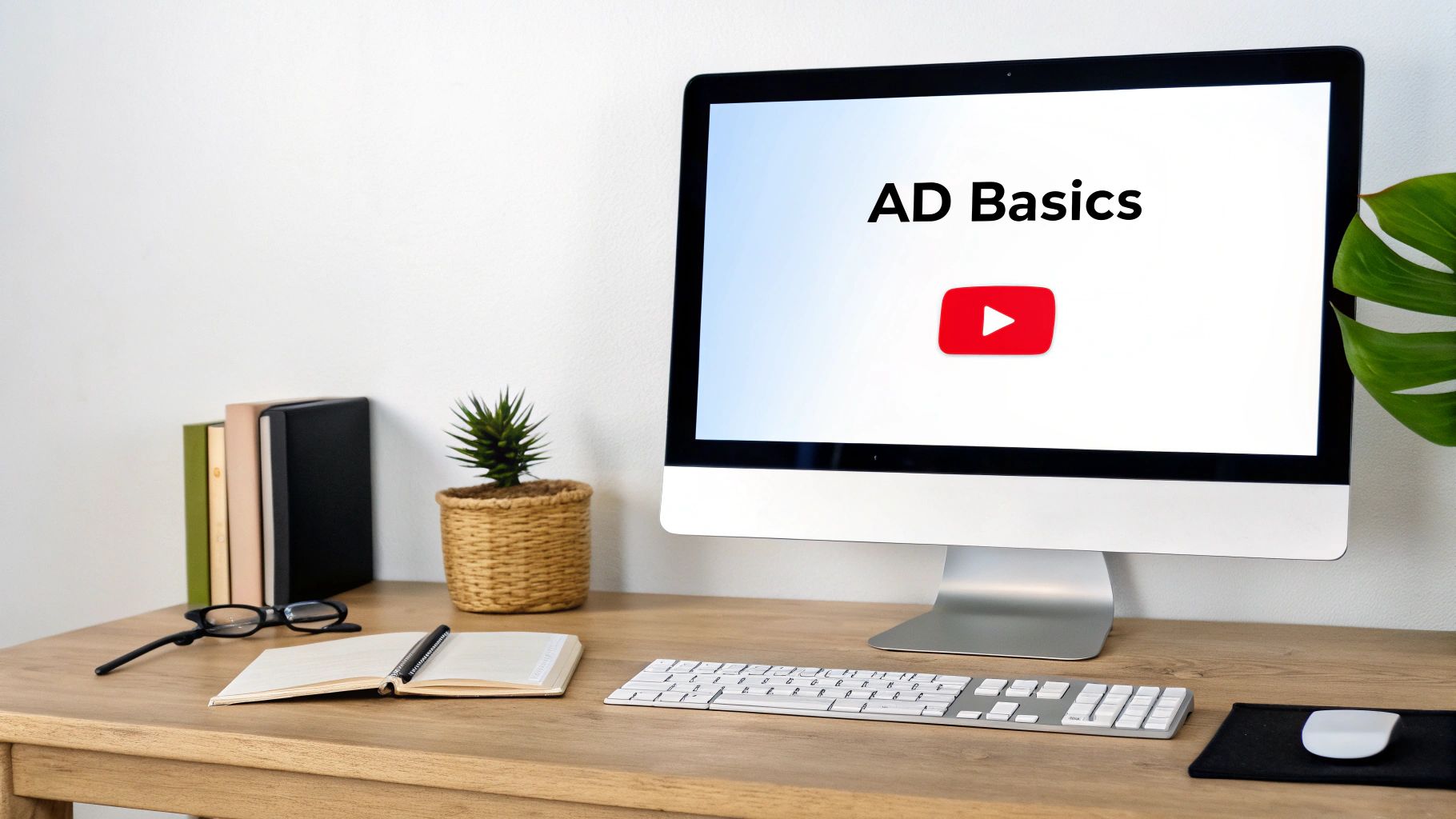
Why a Specialized Consultant Wins
Let's be blunt: the difference between hiring a dedicated consultant and a large agency is night and day. Big agencies are juggling dozens, if not hundreds, of clients. Their business model depends on a cookie-cutter approach. Your account gets passed down to a junior employee who's just following a checklist, and that rarely leads to standout results. They're built for volume, not for specialized excellence.
As a consultant, my success is directly tied to yours. It has to be. I'm the one in the trenches, personally managing every part of your campaign, from the initial setup to the daily optimizations. This direct, hands-on style means I can make quick adjustments and gain a much deeper understanding of what actually moves the needle for your specific business.
The core advantage is simple: You get an expert, not an account manager. My entire focus is on squeezing every last drop of value out of your ad spend (ROAS) through relentless targeting and creative testing—a level of detail that just gets lost in the shuffle at a large, impersonal agency.
YouTube Ad Management Consultant vs Agency
Choosing your partner is one of the most critical decisions you'll make. Agencies will try to sell you on their scale and fancy offices, but a consultant delivers expertise without the overhead. A big team might look impressive on a sales call, but a specialist gives you the focused attention needed to make your ad budget work harder and smarter.
Here’s a clear breakdown of what you get with each approach.
Factor | Specialized Consultant (My Approach) | Large Agency (The Competition) |
|---|---|---|
Strategy | Custom-built for your specific business goals and market. | Often uses standardized templates and one-size-fits-all strategies. |
Communication | Direct one-on-one access to the expert managing your account. | Communication is filtered through account managers or junior staff. |
Optimization | Daily, hands-on adjustments based on real-time performance data. | Infrequent, automated, or checklist-based optimizations. |
Cost & Value | Transparent fees with a clear focus on delivering maximum ROAS. | Higher overhead, bloated retainers, and complex fee structures. |
Ultimately, the choice comes down to what you value more: the illusion of safety in numbers or the tangible results that come from dedicated, senior-level expertise. When you're ready to stop paying for an agency's bloated structure and start investing in results, the difference becomes pretty clear.
Building Your Foundation in Google Ads
Before a single dollar of your ad budget gets spent, we have to build a solid foundation in Google Ads. This is the single most important step in the entire process, and frankly, it's where most big, overloaded agencies drop the ball. They rush through a checklist to get you onboarded quickly, but I treat this phase with the surgical precision it needs.
Getting this right from day one is the difference between a profitable campaign and a money pit.
Everything you do to advertise on YouTube—from creating ads to measuring results—happens inside the Google Ads platform. It's your command center.
This is the homepage you'll be working from.
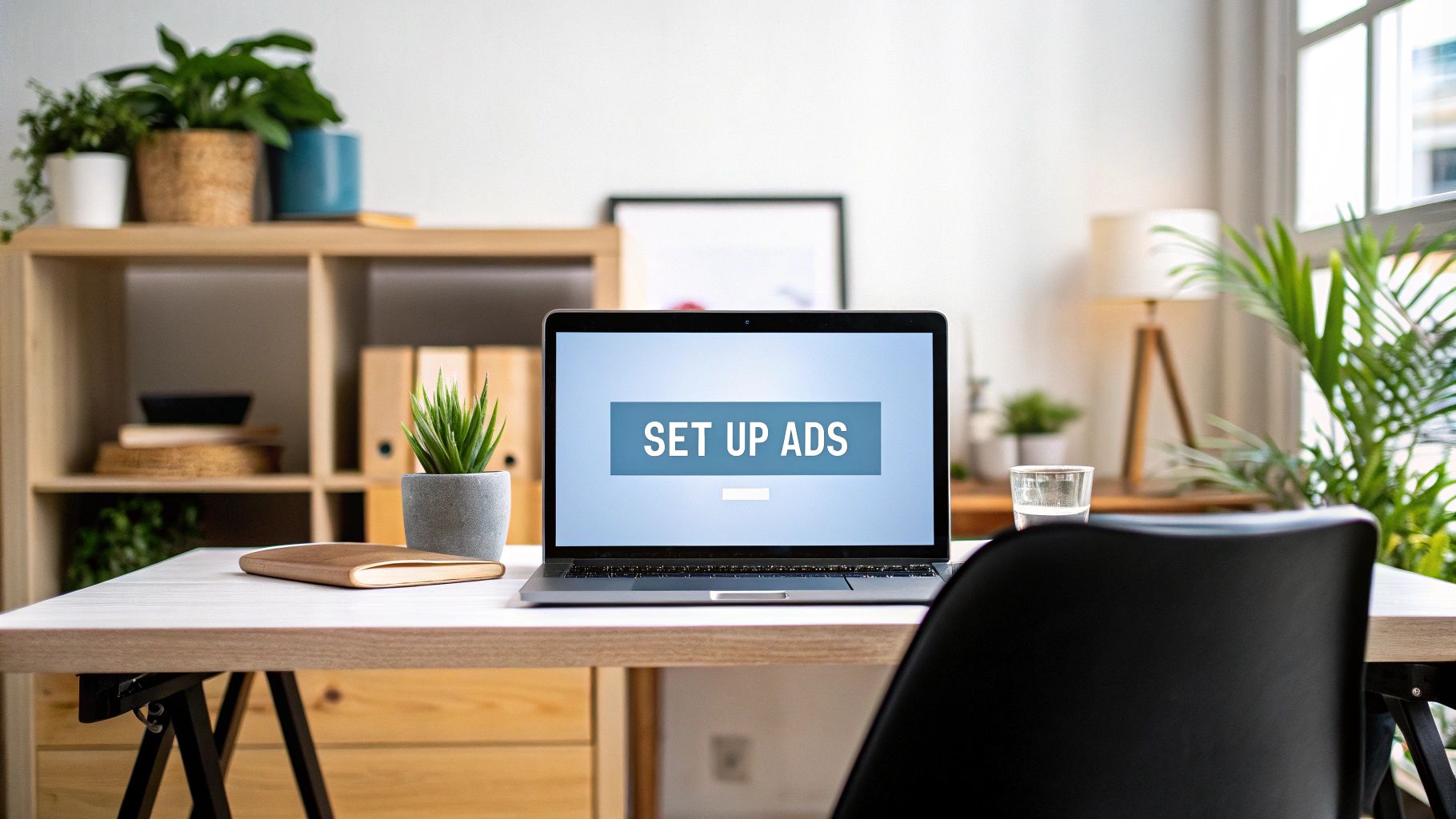
It might look simple, but this interface is where your business goals become real-world ads that can reach millions of people.
Linking YouTube And Setting Up Conversions
First things first, we need to link your YouTube channel directly to your Google Ads account. This simple connection is what unlocks some of the most powerful tools in your arsenal, especially remarketing lists. These lists let you get back in front of people who’ve already engaged with you by watching your videos, liking your content, or subscribing.
More importantly, though, we need to set up conversion tracking. This is non-negotiable. While some agencies will be happy to report on fluffy vanity metrics like views and clicks, I only care about what actually moves the needle for your business:
Leads from your website's contact form.
Phone calls that come directly from your ads.
Actual sales completed in your e-commerce store.
Without proper conversion tracking, you’re flying completely blind. You have no real way of knowing which ads, audiences, or video creative are driving bottom-line results. This is often the #1 reason I hear from businesses that their ads "don't work," and it's almost always a problem that stems from a rushed, impersonal agency setup. It’s a huge topic, but you can read more here about why hiring a senior Google Ads consultant beats working with a bloated PPC agency.
Expert Insight: An agency might set up one generic "form fill" conversion and call it a day. I dig deeper. I'll set up multiple, specific conversion actions so we can distinguish between a high-value demo request and a simple newsletter sign-up. That granular data is what allows for truly smart optimization and is a level of detail agencies often skip.
Crafting Your First High-Impact Campaign
This is where my strategic approach really differs from the cookie-cutter templates you see at big agencies. When we launch your YouTube ads, we aren't just "creating a campaign." We're engineering a precision-guided machine built around one thing: your business goals.
That level of precision is non-negotiable now. YouTube's ad revenue shot up from around $0.8 billion in 2010 to a staggering $36.1 billion this year. That's a 45-fold increase, which tells you just how crowded the space has become. My job is to make every dollar of your budget cut through that noise. You can see the full story on YouTube's growth over at Business of Apps.
Selecting The Right Ad Format
Most agencies just default to whatever is easiest to set up. We do the opposite. We pick the ad format that actually aligns with your specific objective. Each one has a different job to do, and getting this right from the start is the first step toward a profitable campaign.
In-Stream Ads: These are your classic pre-roll or mid-roll ads. They're fantastic for driving awareness and sales, if you have creative that can hook someone in the first five seconds.
In-Feed Ads: These show up in search results and on the YouTube homepage. They are perfect for grabbing the attention of people who are actively looking for solutions or content like yours.
Shorts Ads: This is your go-to for reaching new, highly engaged audiences in a mobile-first environment. Think quick, punchy brand stories that can drive impulse clicks and actions.
As a consultant, I’ll dig into your specific offer and audience to pick the format with the highest probability of success. For a B2B software client, we saw a 3x higher conversion rate with In-Feed ads versus In-Stream. Why? Because their ideal customer was already deep in research mode, not passively watching videos. An agency's templatized approach would have missed this completely.
This visual guide breaks down the core workflow I use to get campaigns started on the right foot.
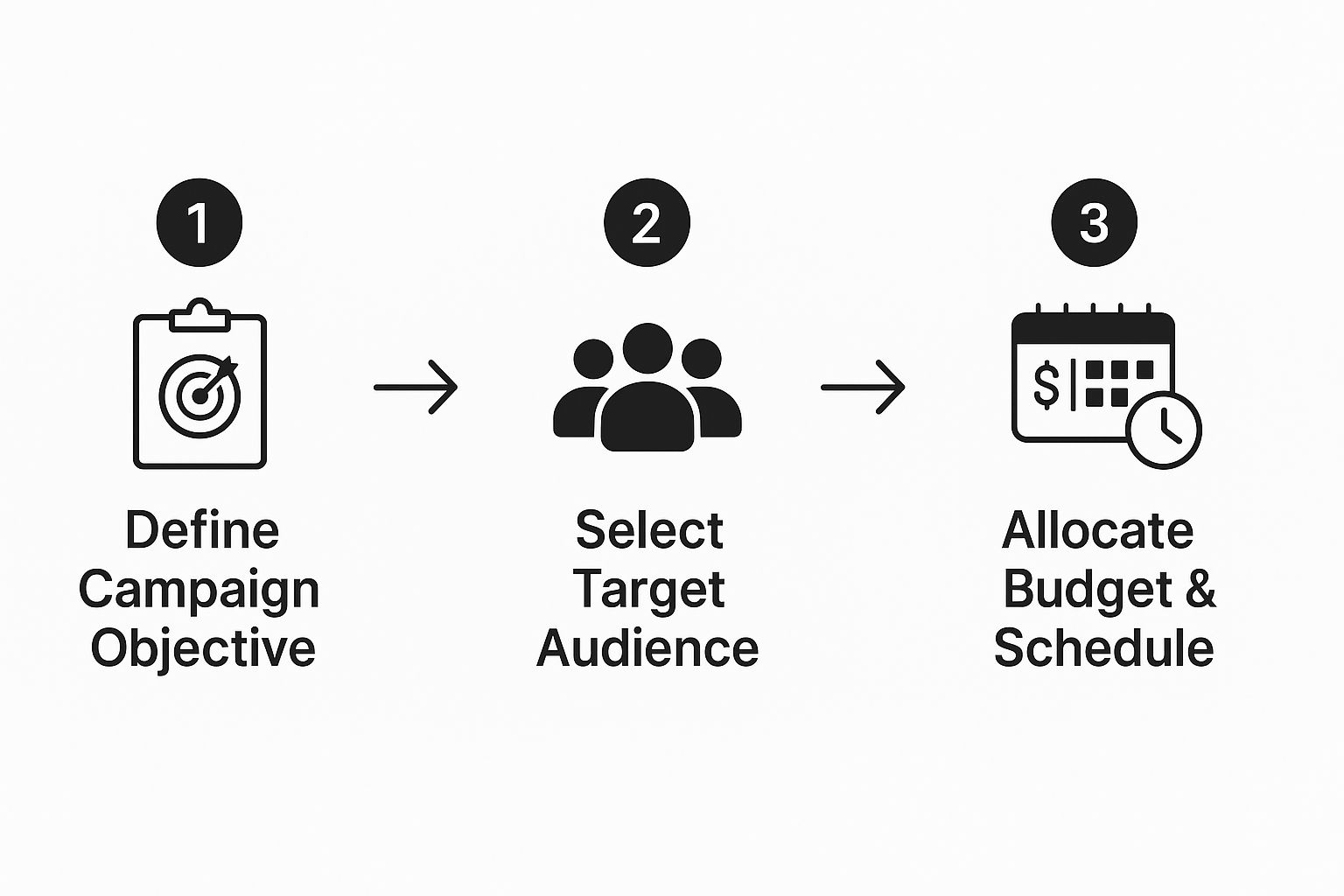
This process makes sure every single decision—from the campaign objective down to the daily budget—is strategically locked in before a single cent is spent.
Structuring For Control And Scalability
Next up is building a smart campaign structure. So many agencies just throw everything into one big ad group, which completely wrecks your ability to optimize effectively. I take the exact opposite approach.
We'll build out tightly-themed ad groups, each targeting a specific audience with a specific creative angle.
This gives us surgical control over bidding and lets us see exactly what's working and what's not, fast. We begin with a lean, test-focused budget to prove the concept and generate some early wins. Once we find that winning formula, we scale it—methodically. This isn’t about guessing; it's a calculated strategy designed to build profitable momentum right out of the gate.
Mastering Precision Audience Targeting
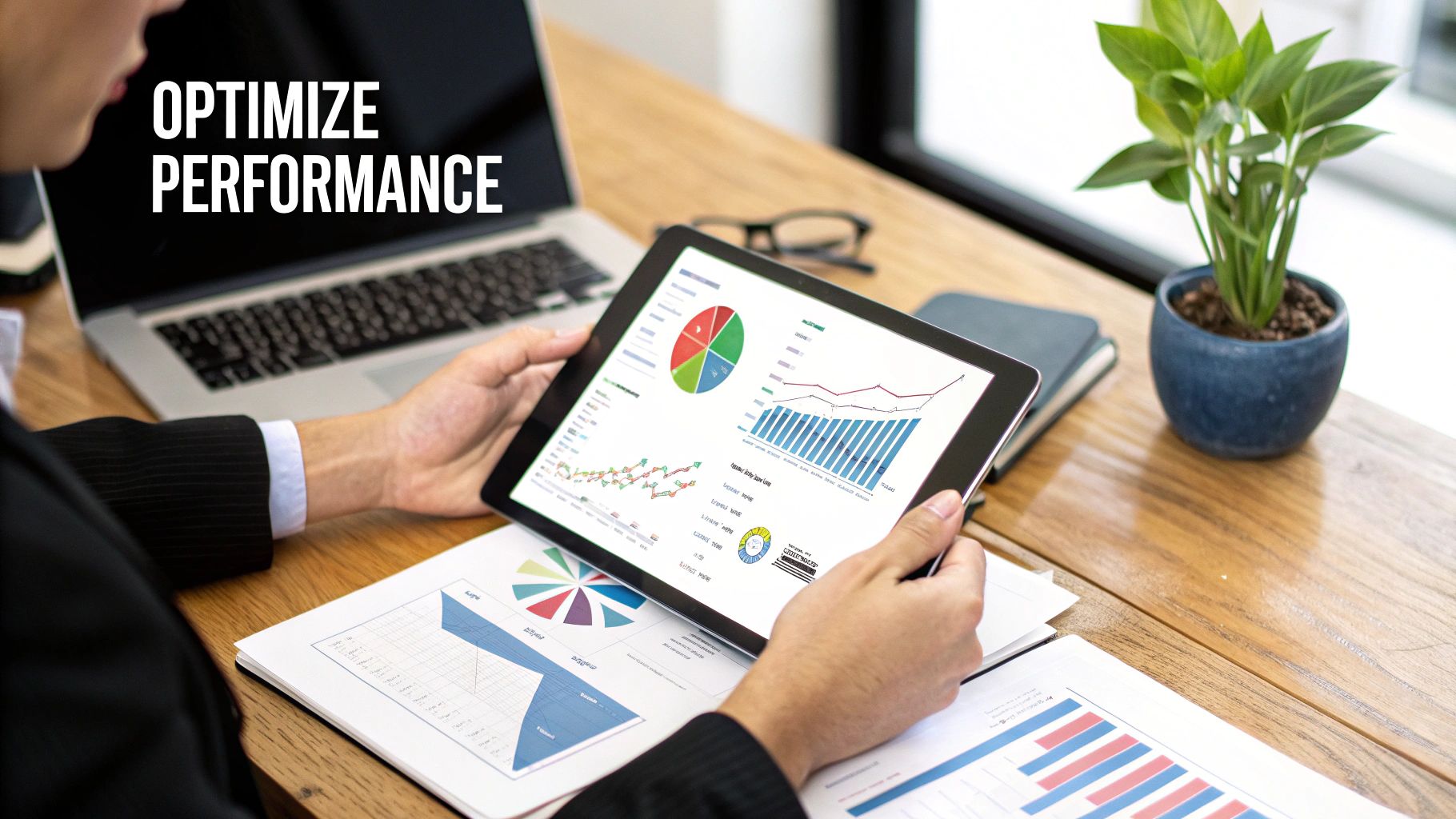
This is where the personalized expertise of a seasoned consultant delivers value that a typical agency's broad-stroke methods just can't match. Getting traction on YouTube isn't about reaching the most people; it's about reaching the right people, every single time.
This focus on precision is more critical than ever, especially in competitive markets. The US, for instance, leads the world in YouTube ad revenue, meaning competition is fierce. Generic targeting is the fastest way to burn through your budget with nothing to show for it. If you want a deeper look at the numbers, Global Media Insight has some comprehensive YouTube user statistics.
Going Beyond Basic Demographics
Large, bloated agencies love basic demographic targeting—age, gender, location—because it’s easy. It looks like work is being done on their reports, but it’s often lazy, ineffective, and expensive for you.
I go much deeper. My process involves layering multiple targeting methods to build a highly specific, dynamic profile of your ideal customer. This is where a hands-on approach really shines. I personally build and refine these audiences, combining different signals to find users with real buying intent.
Affinity Audiences: These are good for broad awareness, like reaching "coffee lovers." Think of it as casting a wide net.
In-Market Audiences: This is a step up. We're now targeting people actively researching products or services you offer, like those looking for "espresso machines."
Custom Segments: This is the most powerful tool in the shed. We can build an audience from scratch based on their recent Google searches, the websites they visit, or even the apps they use.
Consultant vs. Agency: An agency might target "business professionals" and call it a day. As a consultant, I’ll create a custom segment of people who have recently searched for your competitor’s software, visited top industry news sites, and downloaded specific productivity apps. That’s the difference between casting a wide net and spearfishing.
Surgical Precision with Custom Segments and Placements
This is where we really separate from the pack. I build hyper-specific Custom Segments that act as a direct pipeline to your best potential customers. Imagine targeting people who searched Google for "how to solve [your customer's exact problem]" just last week. It's incredibly powerful.
We also use Placement Targeting to hand-pick the exact YouTube channels—and even specific videos—where your ads will appear.
If you sell hiking gear, we won't just target "outdoor enthusiasts." We'll place your ad directly on a popular gear reviewer's video about the top 5 hiking boots of the year. The context couldn't be more perfect.
This surgical approach ensures every dollar is spent on highly qualified viewers, which dramatically boosts your return on ad spend. You can read more about my philosophy on how to optimize Google Ads and beat bloated agencies right here on the blog.
How to Analyze and Optimize Your Campaigns
Getting your campaign live is just the first step. The real work—and the real growth—begins with what happens next. This is all about continuous, data-driven optimization.
It’s a hands-on process that, frankly, is often completely missing in large, bloated agency workflows. This is where an experienced consultant’s focus becomes your single biggest advantage. I don't just launch campaigns and hope for the best. My job is to teach you how to read the story your campaign data is telling, so we can make smart decisions together.
We’ll focus on the metrics that actually move the needle for your business, not just the vanity numbers that look good in a report.
Focusing On What Truly Matters
It’s easy for an agency to send you a report packed with impressive-looking view counts. But let's be honest: views don't pay the bills.
The questions that really matter are the ones that connect directly to your bottom line:
Is your View-Through Rate (VTR) strong? Or are people hitting "skip" the second they can?
What is your Cost Per Conversion? In other words, how much are you actually paying for a qualified lead or a sale?
What is your Return on Ad Spend (ROAS)? For every single dollar you put into these ads, how many dollars are you getting back out?
Understanding the cost of advertising on YouTube and how to save money with a true expert is about more than just setting a daily budget. It’s about squeezing maximum value out of every single click and view. This active, daily management is what turns a decent campaign into a predictable profit engine.
Expert Insight: An agency might let a poor-performing ad bleed money for weeks before their next scheduled report. I check performance daily. If an ad creative isn't working, I pause it immediately and push that budget toward what is working. It's that kind of simple, proactive management—the kind that gets lost in a big agency's bloated process—that makes all the difference.
The Consultant's Optimization Checklist
My optimization process isn't some generic, one-size-fits-all checklist. It's a living, breathing strategy. Together, we will constantly refine audiences, A/B test ad creative, adjust bids based on device or demographic performance, and aggressively cut any wasteful ad placements that are draining your budget.
This approach is fundamentally different from how content creators make money. They typically join the YouTube Partner Program, where they get 55% of the ad revenue shown on their videos, while YouTube keeps the other 45%. A creator's earnings depend heavily on their niche—someone in finance will earn far more per view than a daily vlogger. But my focus isn't on earning from views; it's on optimizing your ad spend to drive direct, measurable results for your business.
Common Questions About YouTube Advertising
As you start figuring out how to get advertisements on your YouTube channel, you're going to have questions. It's only natural.
Here are the straight-up, no-fluff answers to the questions I hear most often from clients. This is all based on my direct, in-the-trenches experience running these campaigns. My goal is to give you the confidence to move forward and sidestep the expensive mistakes that are all too common when you’re just a number in a big agency’s portfolio.
How Much Does It Cost To Advertise on YouTube?
You're in the driver's seat here. You can set your own budget and get started with as little as $10 a day.
Realistically, the true cost comes down to who you're targeting, your industry, and how good your ad is. Most campaigns see an average cost-per-view (CPV) somewhere between $0.10 and $0.30.
This is where working with a hands-on expert makes a difference. I focus on optimizing every dollar to avoid wasted spend on views that will never convert—a classic problem when agencies apply a broad, one-size-fits-all strategy that wastes your money on their expensive overhead.
Do I Need a Professionally Filmed Video Ad?
Absolutely not. While a slick, high-production video can be great, authenticity is what really wins on YouTube. A clear video shot on your smartphone can crush it if the message hits home and solves a real problem for your audience.
I almost always tell new clients to start with a simple, direct-to-camera video. We test the message first before you even think about sinking a bunch of money into a big production. It's a smarter, faster way to get the data you actually need.
How Quickly Can I Expect to See Results?
You'll start seeing performance data—things like views, clicks, and view rates—within hours of your campaign going live. That's the easy part.
But the results that actually matter to your business, like qualified leads or sales, take a bit more time to build up. It usually takes a few weeks to collect enough data to really start optimizing a campaign toward solid profitability.
A key difference in my approach is the speed of iteration. I actively manage campaigns to find what works and scale it faster than a bloated agency ever could, significantly shortening your time to a positive return on investment.
Is YouTube Advertising Better Than Facebook Ads?
This is the classic question, and the answer is: it depends entirely on your goal.
YouTube is king for capturing user intent. You're getting in front of people who are actively searching for solutions on Google and YouTube right now. This almost always translates to higher-quality leads who are further down the buying funnel.
Facebook, on the other hand, is a beast for generating broad awareness and targeting people based on their interests and demographics.
As a specialist, my job isn't to pick a favorite. It's to figure out where your specific audience is most receptive and how we can use YouTube’s unique advantages to drive better, more profitable outcomes for your business—something a one-size-fits-all agency often gets wrong.
Ready to stop guessing and start getting real results from your YouTube ads? Come Together Media LLC offers the expert, one-on-one guidance that bloated agencies can't match. Book your free, no-commitment consultation today.




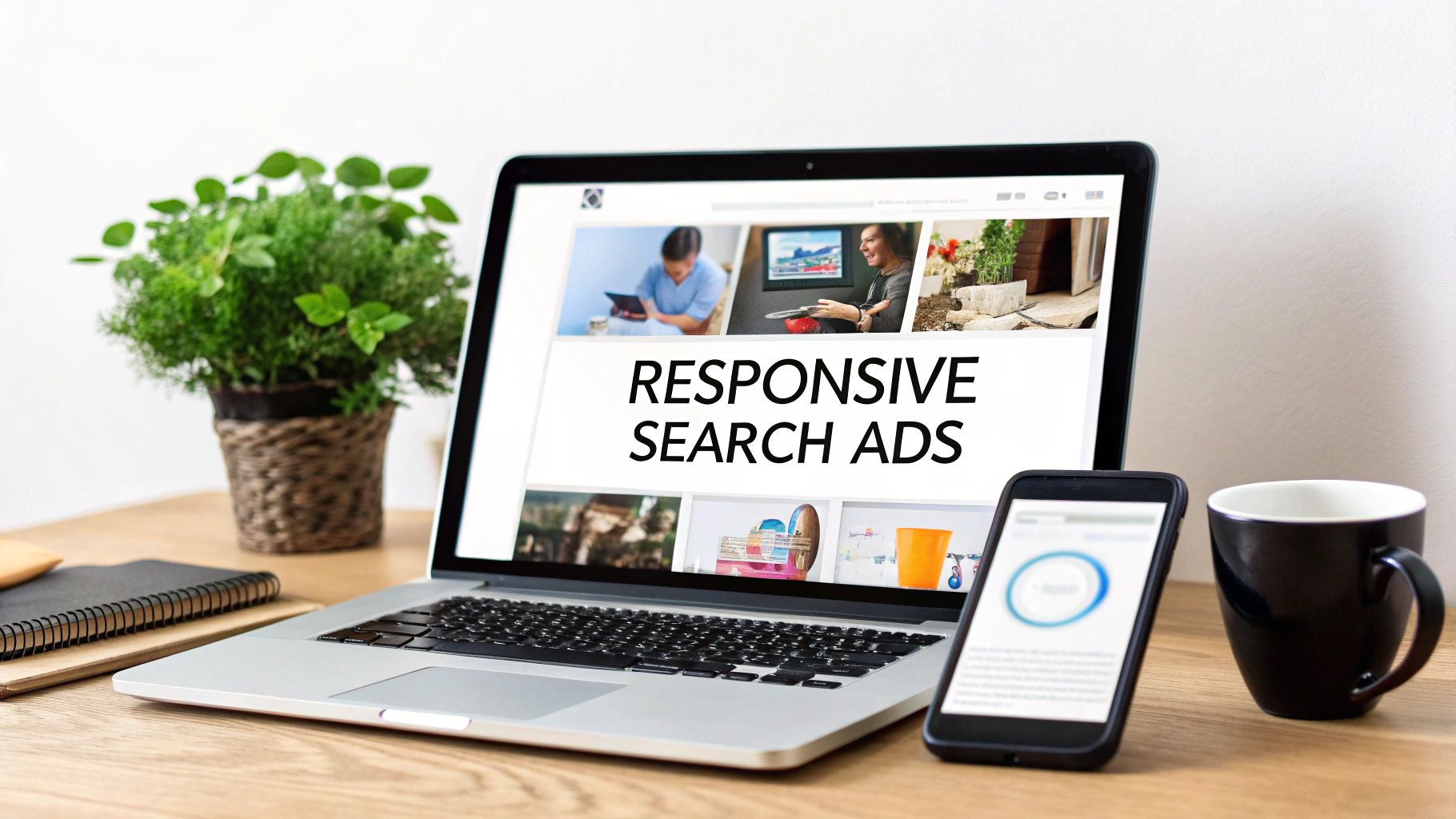
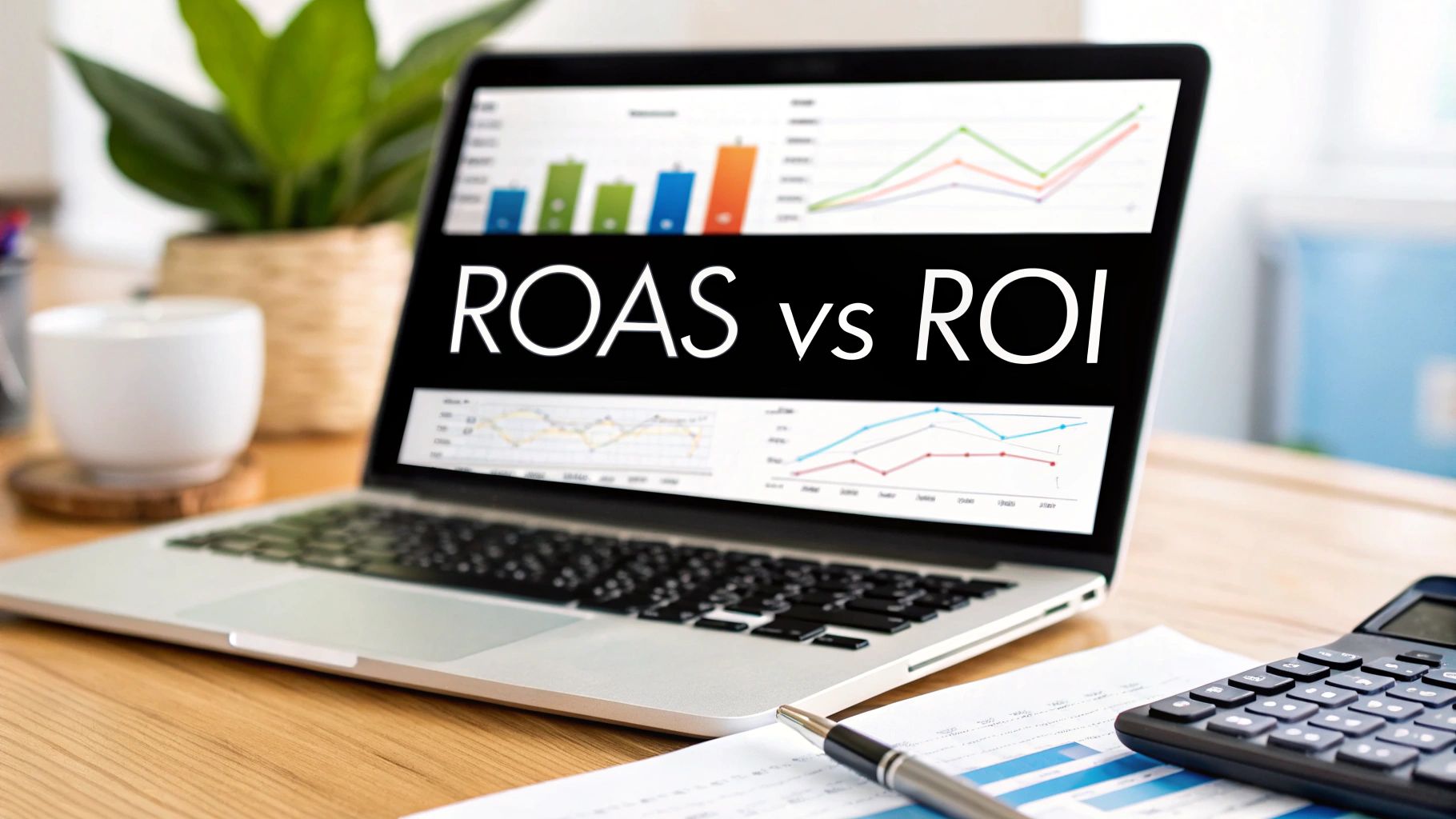
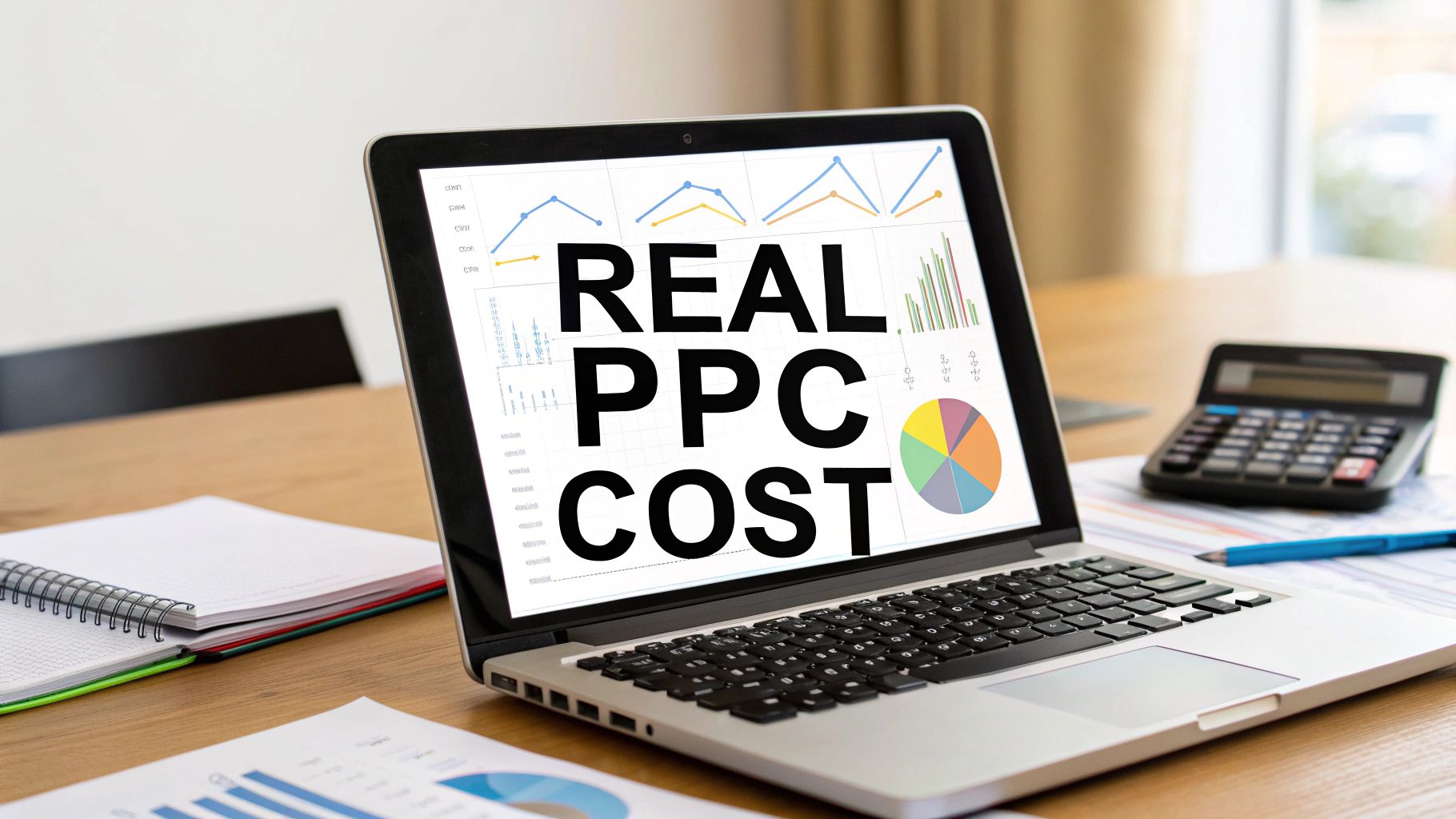
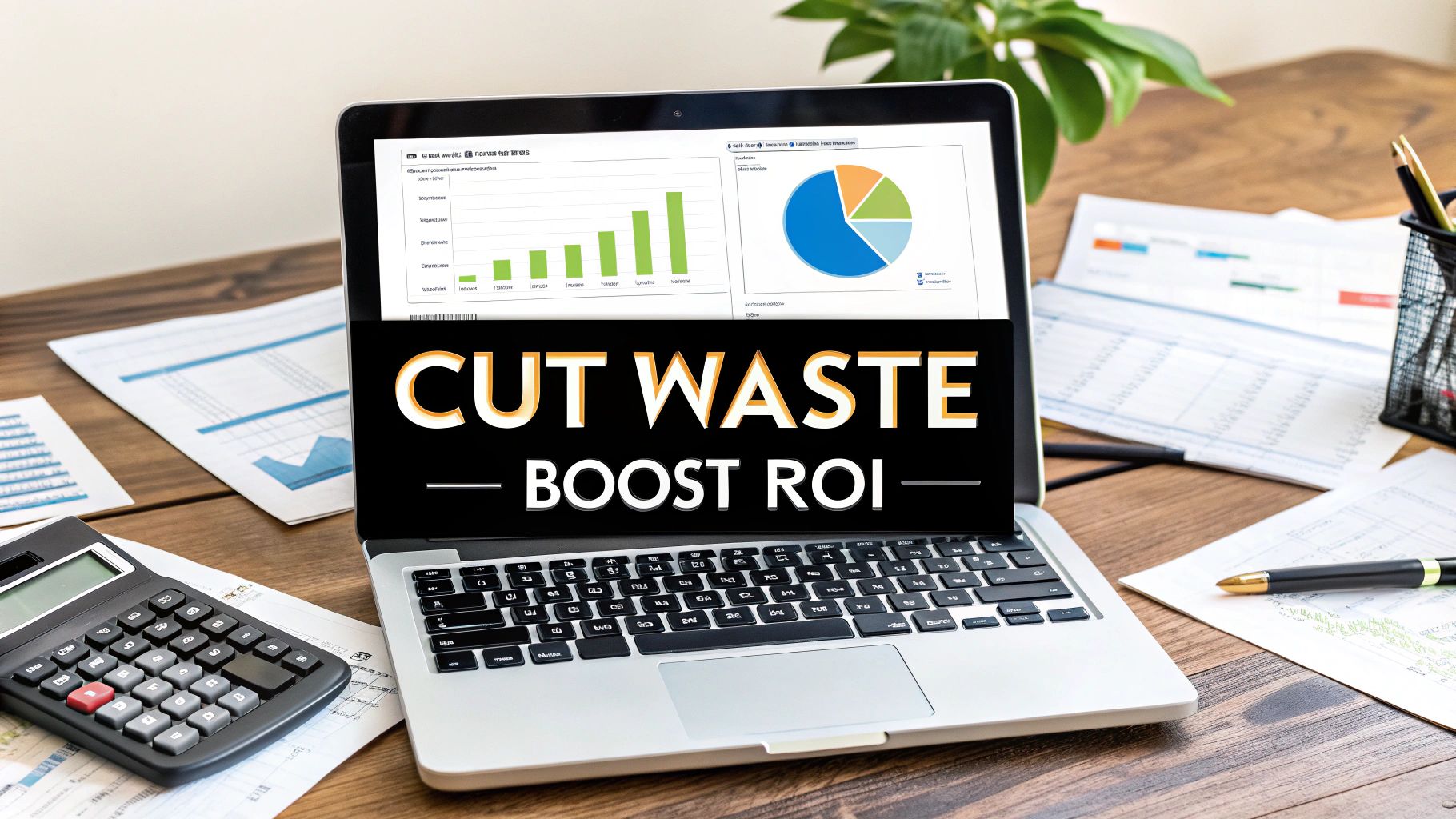
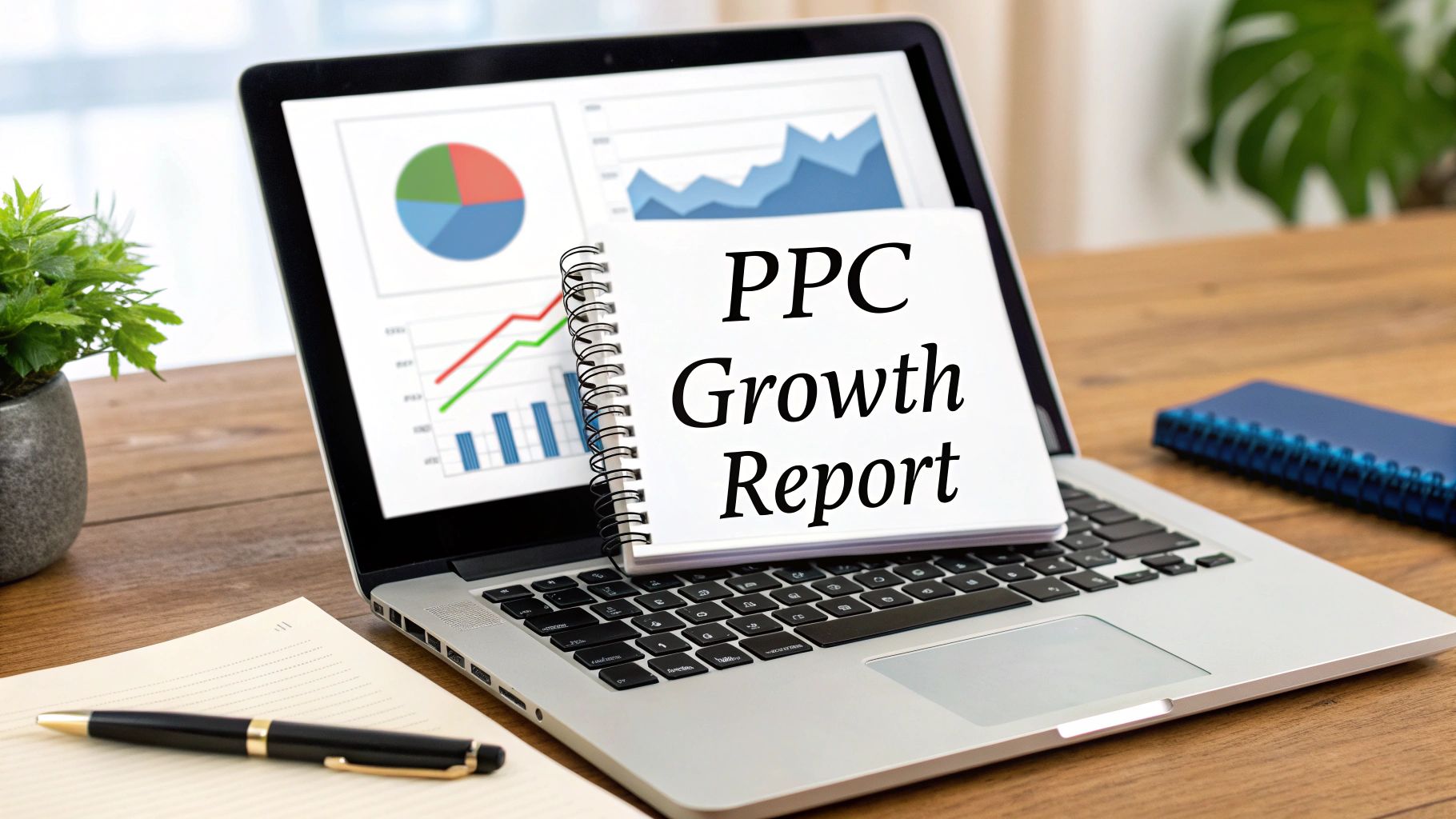
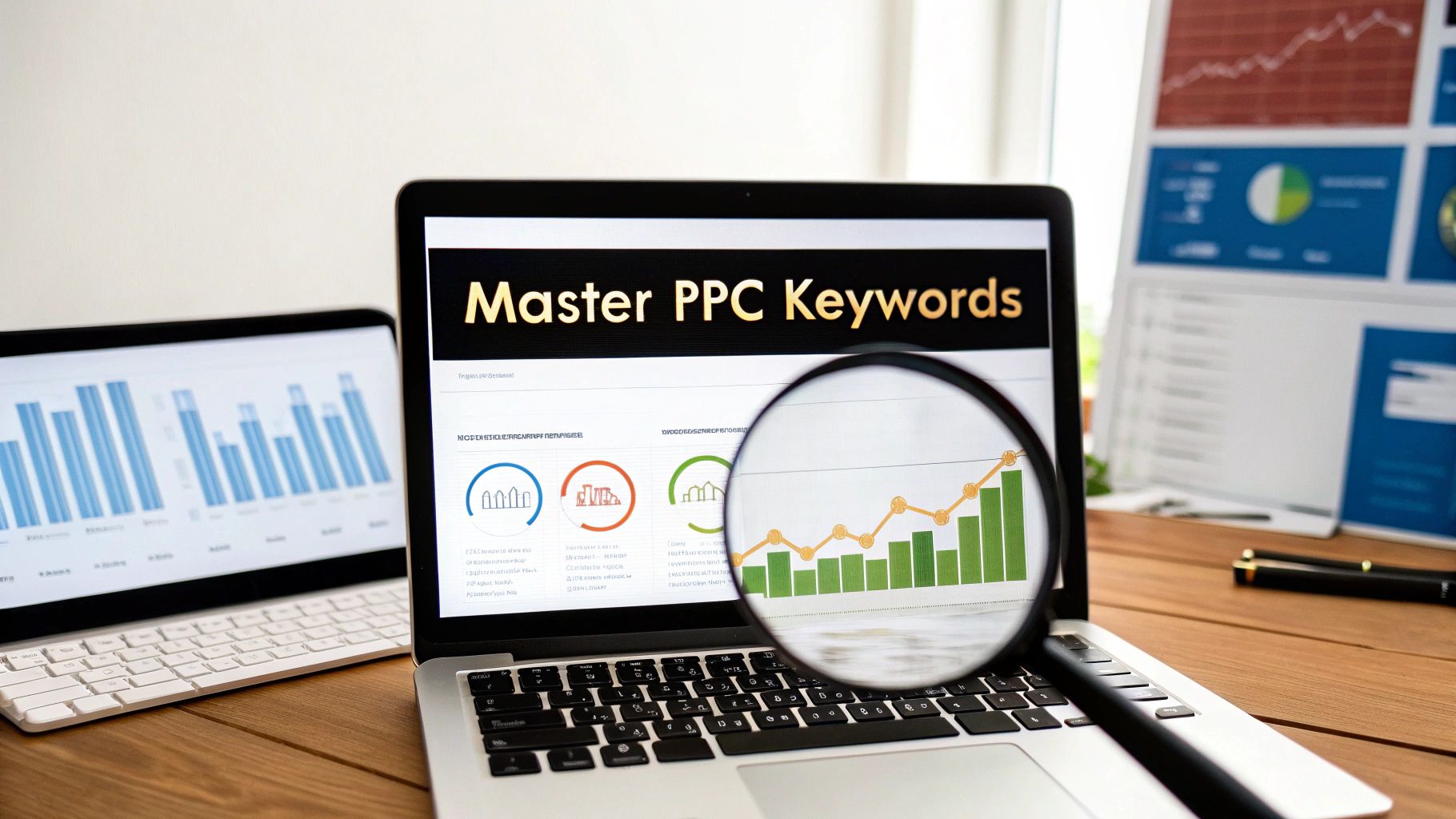
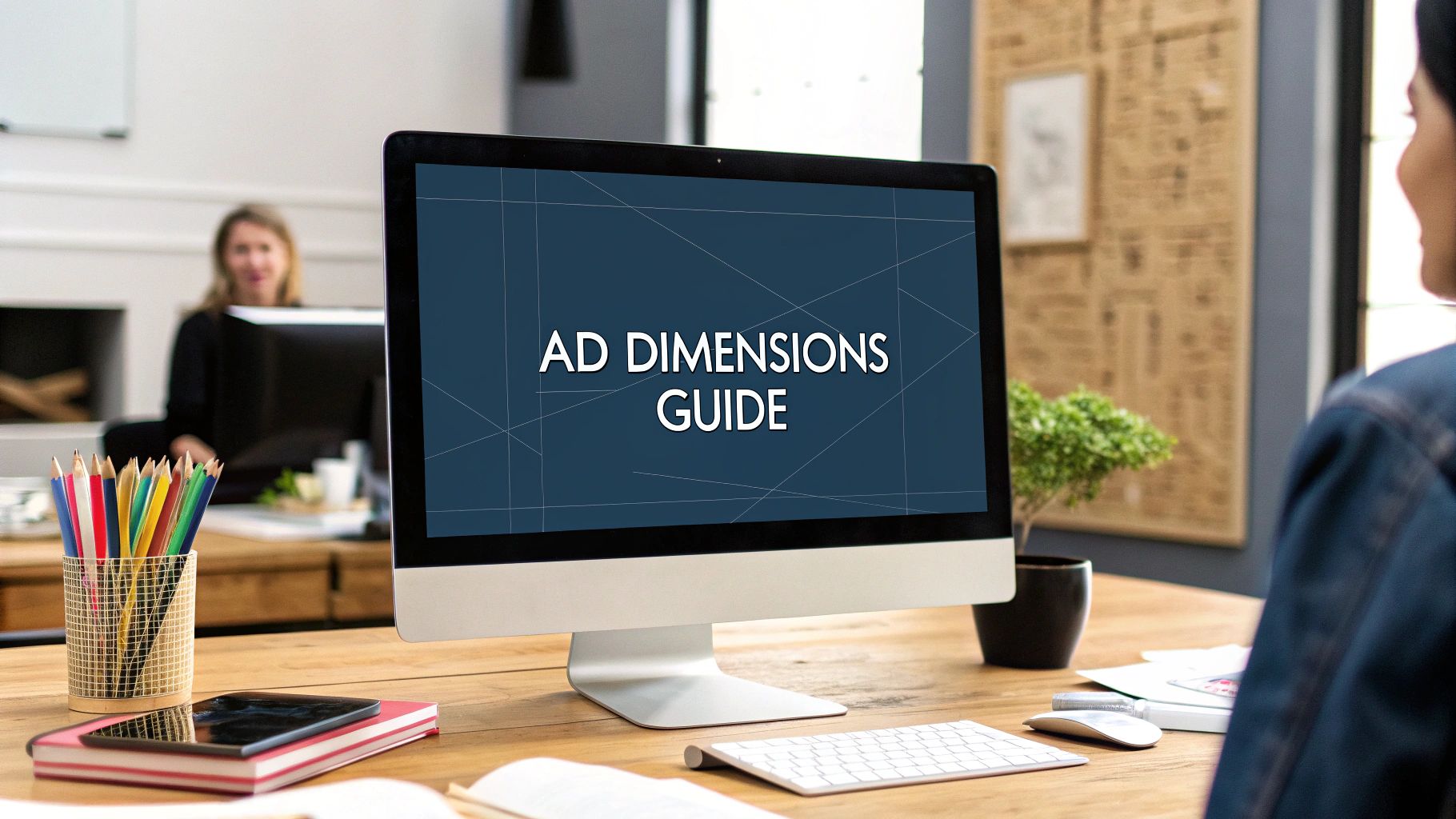
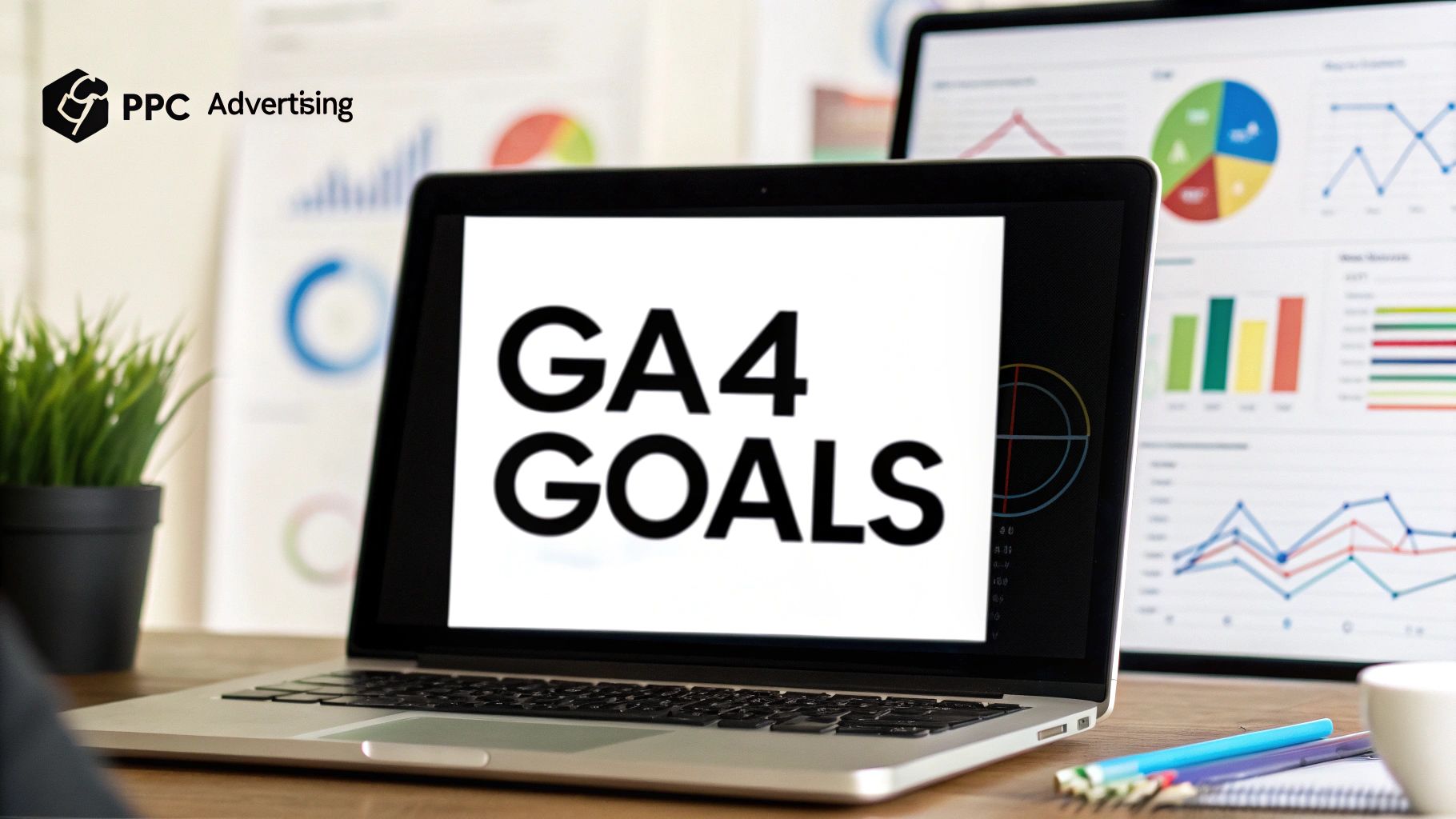
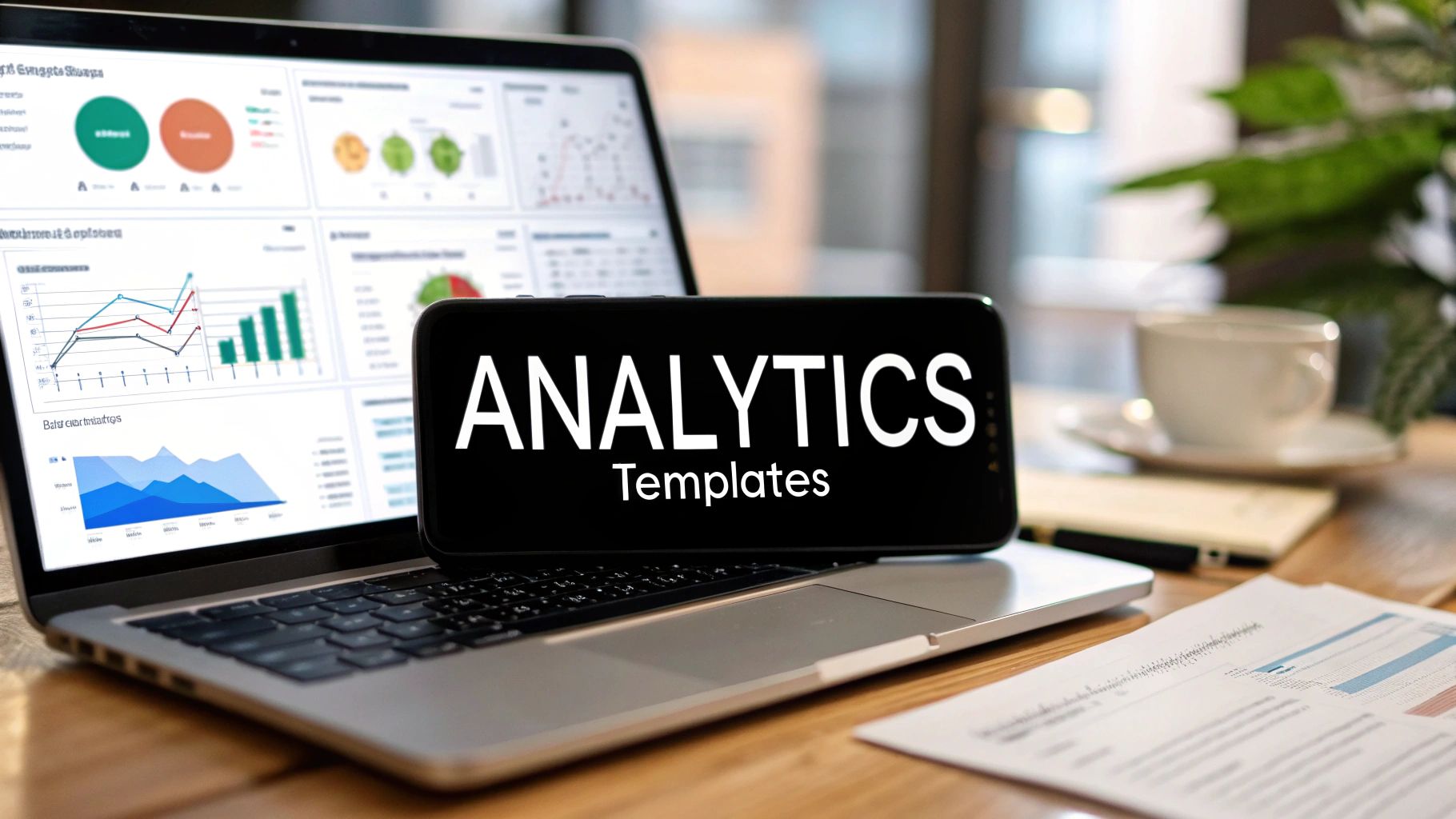
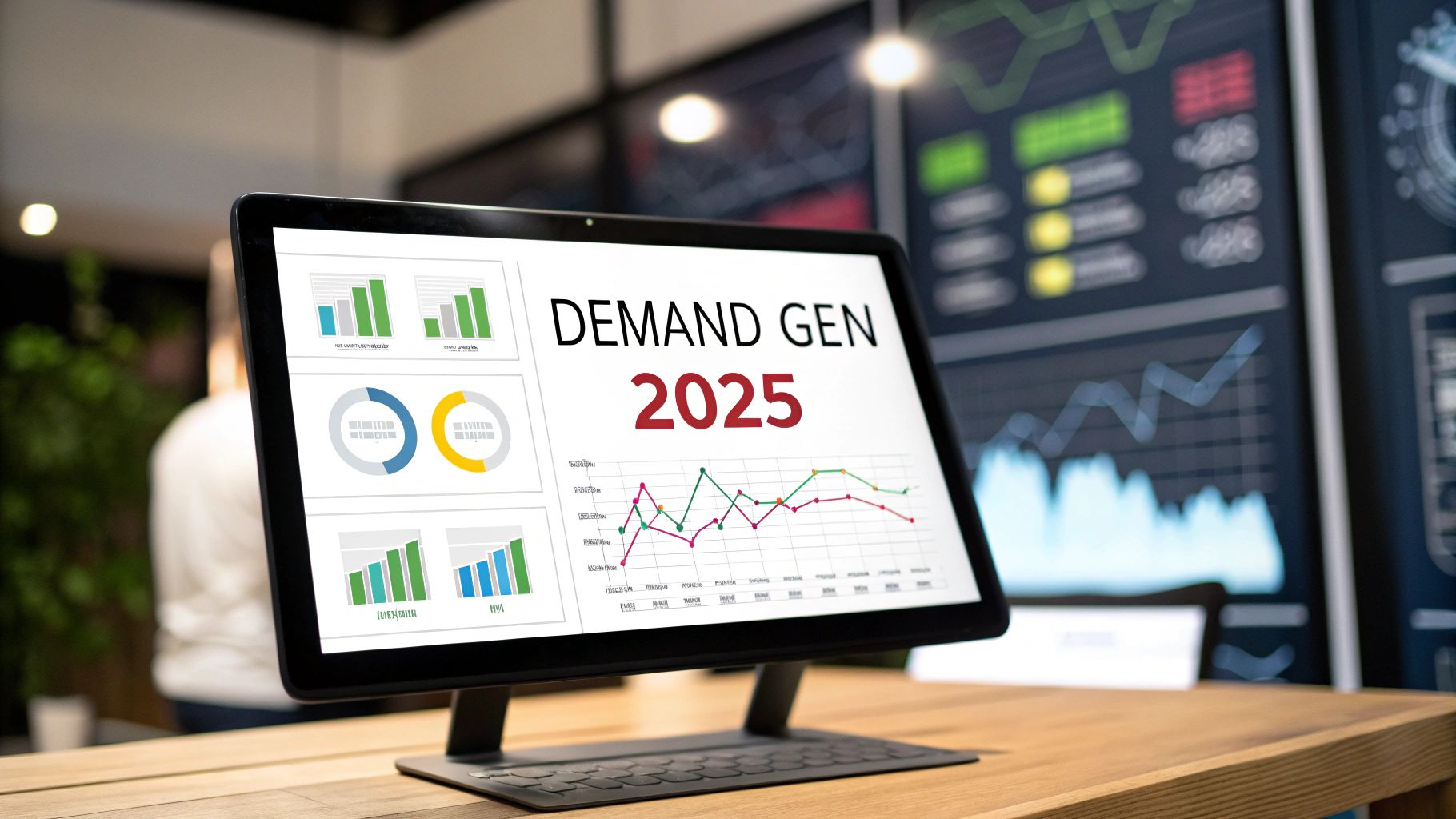
Comments